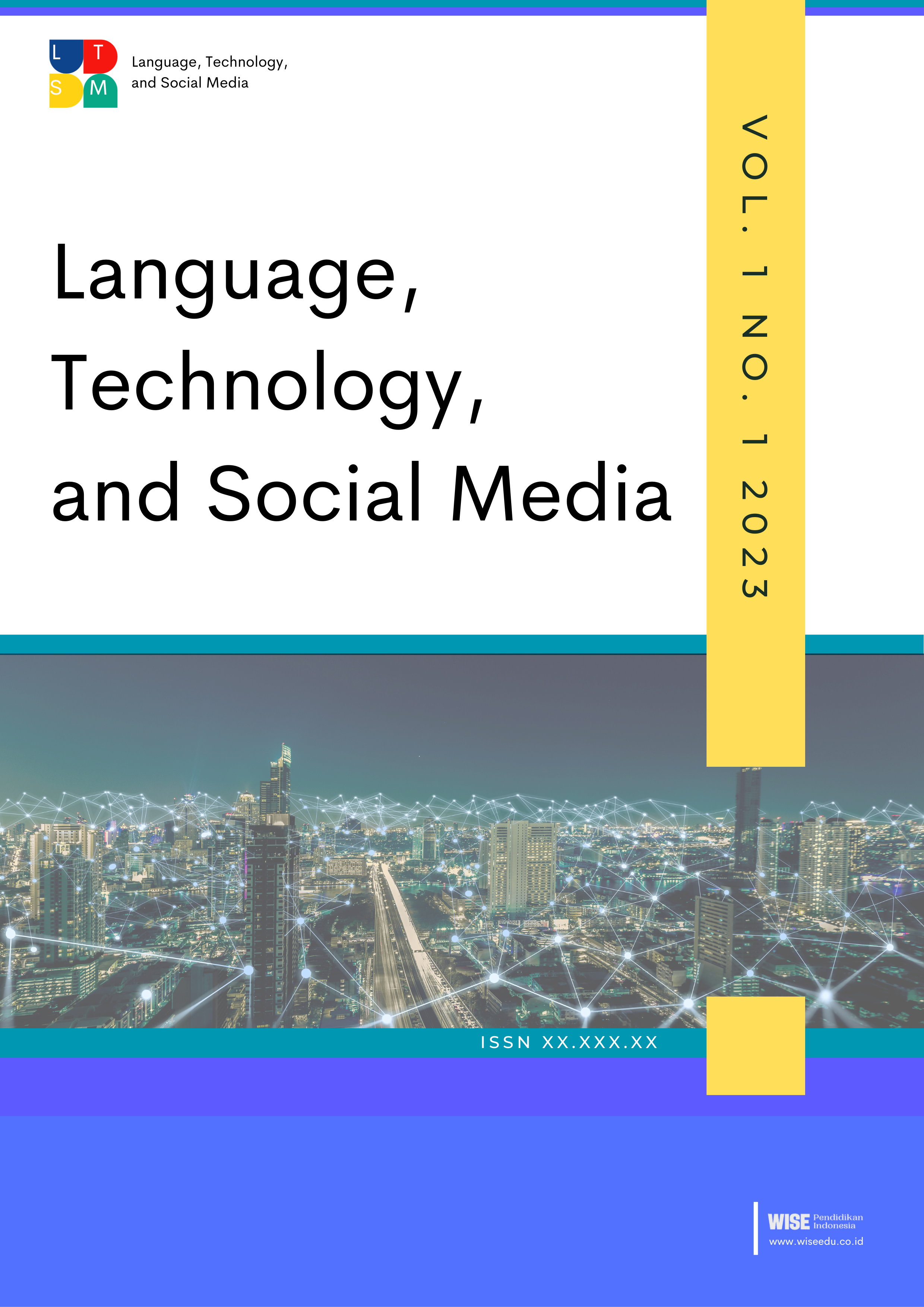Challenges and Strategies in Translating English Collocations into Kurdish: A Linguistic Approach
DOI:
https://doi.org/10.70211/ltsm.v1i2.67Keywords:
Collocation, Translation, Kurdish EFL Learners, Cultural Mismatch, Pedagogical StrategiesAbstract
Collocation is a combination of two or more words which always arbitrarily come together in different contexts in language. This research deals with the translation of English collocations into Kurdish. The aim of this study is to introduce those problems that Kurdish students encounter when they translate English collocations into Kurdish and then how to solve them. This paper is divided into two main sections. The first section discusses categorizations of collocation and its translation into Kurdish: problems and solutions. In the second section, there is an empirical study to hypothesize that Kurdish students face difficulties in translating English collocations into Kurdish. This research uses qualitative and quantitative methods. The test involves twenty students of fourth year in the Department of English-College of Languages-University of Sulaimani. The results of the test come up with the hypothesis of the study.
References
L. Bui, “The Role of Collocations in the English Teaching and Learning,” Int. J. Tesol Educ., vol. 1, pp. 99–109, Aug. 2021, doi: 10.11250/ijte.01.02.006.
Z. Ahmadpour Kasgari, “Elaborative text modification vs. input flooding: a case study on non-congruent collocations,” Asian-Pacific J. Second Foreign Lang. Educ., vol. 3, no. 1, p. 8, Dec. 2018, doi: 10.1186/s40862-018-0049-z. DOI: https://doi.org/10.1186/s40862-018-0049-z
T. H. Nguyen, K. H. Anh, and T. N. Khanh, “The Use of English Collocations in Written Translation – A Case of University English-Majored Students,” Int. J. High. Educ., vol. 10, no. 1, p. 252, 2020, doi: 10.5430/ijhe.v10n1p252. DOI: https://doi.org/10.5430/ijhe.v10n1p252
Taufiq Kurniawan and Abdurrahim Abdurrahim, “Errors Analysis towards Collocation Usage,” Dewantara J. Pendidik. Sos. Hum., vol. 2, no. 1, pp. 80–93, 2023, doi: 10.30640/dewantara.v2i1.665. DOI: https://doi.org/10.30640/dewantara.v2i1.665
I. L. de L. Almeida, J. F. Rego, A. C. G. Teixeira, and M. R. Moreira, “Social isolation and its impact on child and adolescent development: a systematic review,” Rev. Paul. Pediatr., vol. 40, 2022, doi: 10.1590/1984-0462/2022/40/2020385. DOI: https://doi.org/10.1590/1984-0462/2022/40/2020385
N. Nesselhauf, “The Use of Collocations by Advanced Learners of English and Some Implications for Teaching,” Appl. Linguist., vol. 24, no. 2, pp. 223–242, Jun. 2003, doi: 10.1093/applin/24.2.223. DOI: https://doi.org/10.1093/applin/24.2.223
A. Purba, B. Sinurat, R. Purba, B. P. S. Dhillon, E. Fatmawati, and N. Saputra, “Translation: The Implementation of Molina and Albir’s Theory in a Movie From English into Indonesian,” Stud. Media Commun., vol. 11, no. 5, p. 25, Mar. 2023, doi: 10.11114/smc.v11i5.6011. DOI: https://doi.org/10.11114/smc.v11i5.6011
G. Gunarso, L. Sandra, and M. Yap, “Determinants for participation in independent learning policy and independent campus programs,” Int. J. Eval. Res. Educ., vol. 12, no. 3, p. 1507, Sep. 2023, doi: 10.11591/ijere.v12i3.24320. DOI: https://doi.org/10.11591/ijere.v12i3.24320
R. C. I. Prahmana and U. D’Ambrosio, “Learning geometry and values from patterns: Ethnomathematics on the batik patterns of yogyakarta, indonesia,” J. Math. Educ., vol. 11, no. 3, pp. 439–456, 2020, doi: 10.22342/jme.11.3.12949.439-456. DOI: https://doi.org/10.22342/jme.11.3.12949.439-456
L. Zhang, “The Significance of Collocational Knowledge for Learners of English and Teaching Implications,” in Proceedings of the 2020 Conference on Education, Language and Inter-cultural Communication (ELIC 2020), Paris, France: Atlantis Press, 2020. doi: 10.2991/assehr.k.201127.048. DOI: https://doi.org/10.2991/assehr.k.201127.048
E. Delfia, I. D. P. Wijana, and T. M. Jati Kesuma, “Lexical and Grammatical Cohesion in the Regional Regulation Discourse of West Sumatra Province,” J. Lang. Lit., vol. 23, no. 2, pp. 447–463, 2023, doi: 10.24071/joll.v23i2.6081. DOI: https://doi.org/10.24071/joll.v23i2.6081
M. F. Napitupulu, F. Repelita, W. Kembaren, E. Carmelia, and M. Sambas, “Google Translate Analysis Errors in English-Indonesia Translation Text : Idiom Cases,” Regist. J. English Lang. Teach. FBS UNIMED, vol. 12, no. 4, pp. 299–305, 2023.
J. Filladsen, “Translation based on cultural aspect: a study regarding how translating text different traditional in two countries,” Appl. Transl., 2020, doi: 10.51708/apptrans.v14n1.1064. DOI: https://doi.org/10.51708/apptrans.v14n1.1064
J. Beresova, “Authentic Materials – Enhancing Language Acquisition and Cultural Awareness,” Procedia - Soc. Behav. Sci., vol. 192, pp. 195–204, Jun. 2015, doi: 10.1016/j.sbspro.2015.06.028. DOI: https://doi.org/10.1016/j.sbspro.2015.06.028
E. Saedpanah and A. Dastgoshadeh, “The Comparative Effect of Teaching Collocations through Literary vs. Non-Literary Content on EFL Learners,” HOW, vol. 26, no. 1, pp. 63–80, Mar. 2019, doi: 10.19183/how.26.1.473. DOI: https://doi.org/10.19183/how.26.1.473
L. Xue, “Using data-driven learning activities to improve lexical awareness in intermediate EFL learners,” Cogent Educ., vol. 8, no. 1, Jan. 2021, doi: 10.1080/2331186X.2021.1996867. DOI: https://doi.org/10.1080/2331186X.2021.1996867
M. Estaji and M. R. Montazeri, “The Representation of Collocational Patterns and Their Differentiating Power in the Speaking Performance of Iranian IELTS Test-Takers,” Front. Educ., vol. 7, Mar. 2022, doi: 10.3389/feduc.2022.827927. DOI: https://doi.org/10.3389/feduc.2022.827927
Y. J. J. Lee, “Using Films in Second-Language Learning: Perspectives Through the Lens of Transmedia and Cultural Learning,” STEM J., vol. 23, no. 4, pp. 1–11, Nov. 2022, doi: 10.16875/stem.2022.23.4.1. DOI: https://doi.org/10.16875/stem.2022.23.4.1
A. Ahmed Muhammed, “Identifying and Explaining Some Structural Asymmetries in Kurdish vs. the English Language: Morphological and Syntactic Typology Study,” English Lang. Lit. Cult., vol. 2, no. 6, p. 115, 2017, doi: 10.11648/j.ellc.20170206.14. DOI: https://doi.org/10.11648/j.ellc.20170206.14
M. A. Abdulwahid, Z. A. Binti Zainon Hamzah, P. Hajimaming, and H. W. Alkhawaja, “Translating Legal Collocations in Contract Agreements by Iraqi EFL Students-Translators,” Int. J. Educ. Lit. Stud., vol. 5, no. 1, p. 55, Jan. 2017, doi: 10.7575/aiac.ijels.v.5n.1p.55. DOI: https://doi.org/10.7575/aiac.ijels.v.5n.1p.55
K. J. Lay and M. A. Yavuz, “Targeting Turkish-to-English Interlingual Interference Through Context-Heavy Data-Driven Learning,” Sage Open, vol. 10, no. 2, Apr. 2020, doi: 10.1177/2158244020920596. DOI: https://doi.org/10.1177/2158244020920596
Downloads
Published
How to Cite
Issue
Section
License
Copyright (c) 2023 Zana Hama Amin

This work is licensed under a Creative Commons Attribution 4.0 International License.
.gif)









